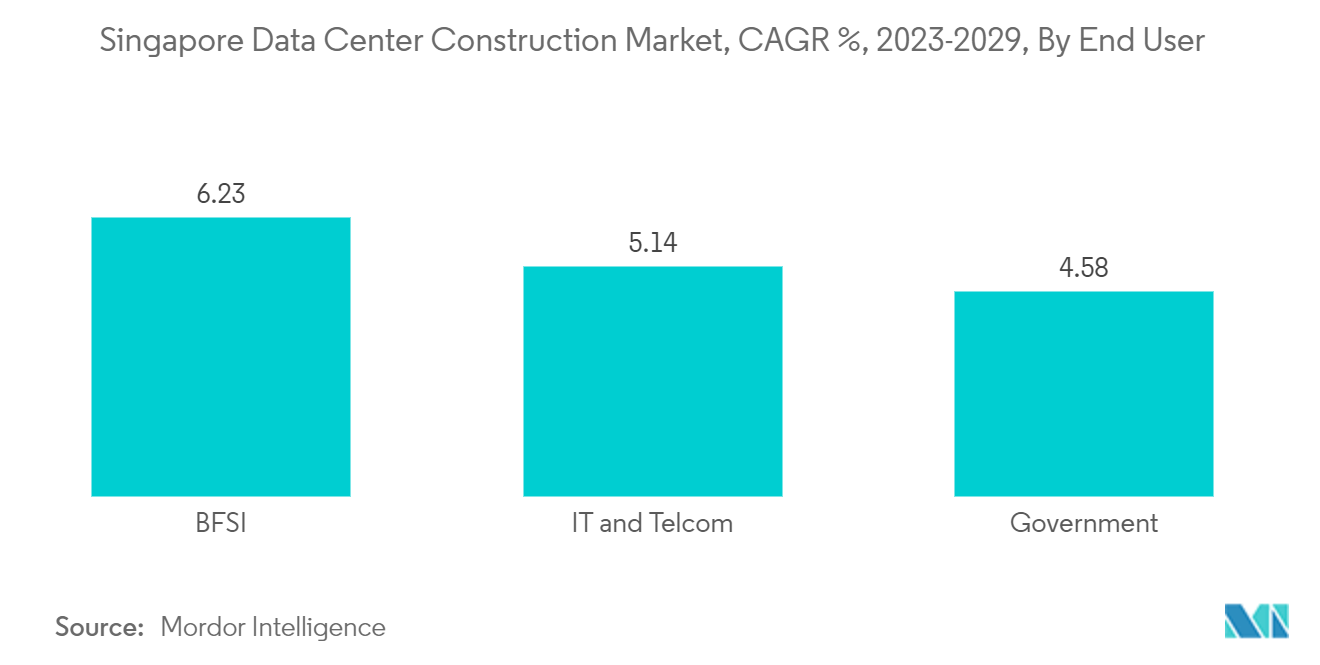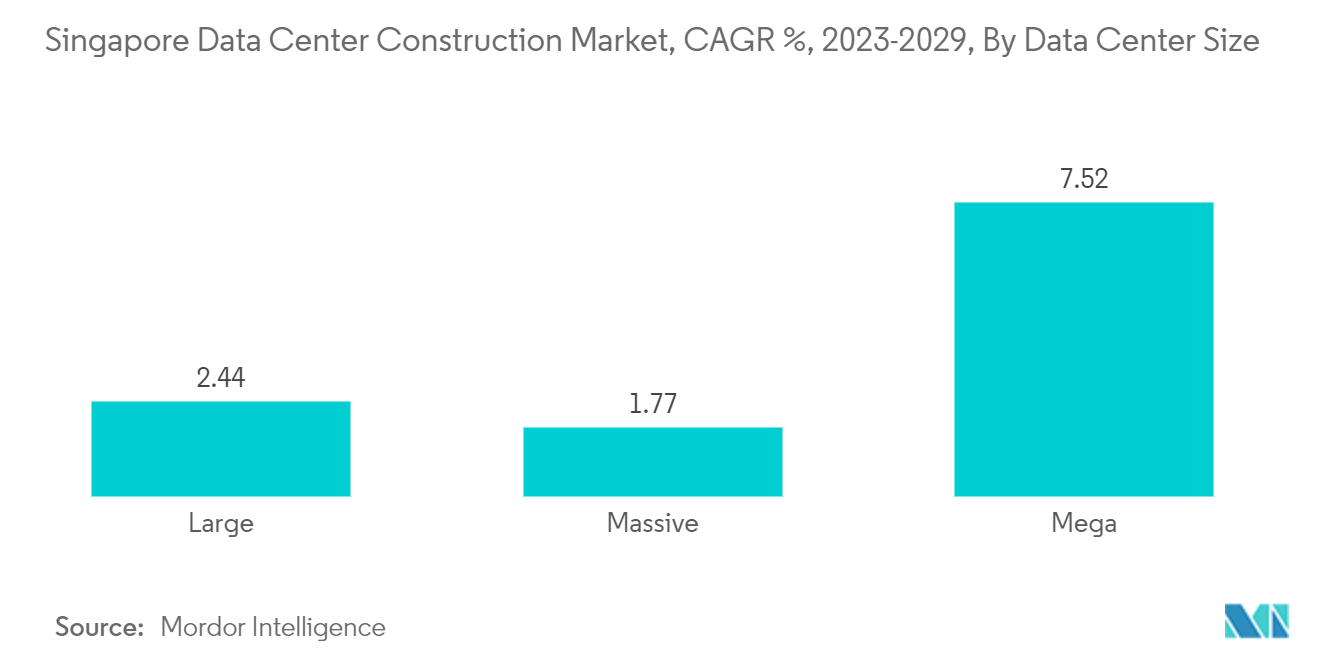Market Trends of Singapore Data Center Power Industry
The IT and Telecom Segment is Expected to Maintain a Significant Market Share
- The media and entertainment industry is expected to hold the highest market share in the data center market, with 21.9% of the market share in 2023 and a projected increase to 22.8% by 2029. The number of active subscribers streaming on Netflix significantly increased from 98.91 thousand in 2017 to 264.83 thousand in 2020. This doubling in just three years suggests the increasing demand for data centers in the media and entertainment industry.
- Furthermore, the BFSI (banking, financial services, and insurance) industry is expected to witness the highest growth rate of 6.23% during the forecast period. The segment is projected to hold an IT load of 119.72 MW in 2029. The increasing demand for cashless payments through e-commerce platforms and other service channels will complement the growth in the industry.
- The number of credit card transactions doubled from 418.39 million in 2017 to 693.41 million in 2023. Additionally, credit card payments per capita rose from 85 in 2017 to 144.48 in 2021. During the same period, the demand for data processing facilities in the BFSI segment increased from 38.4 MW in 2017 to 68.9 MW in 2023, suggesting a correlation with the increasing cashless transactions.

Monitored PDUs Hold a Significant Share in the Market
- Monitored rack PDUs are essential components in data center and server room infrastructure, providing real-time monitoring of power usage, voltage, current, and other electrical parameters. This data helps administrators make informed decisions about power allocation and capacity planning.
- By tracking power usage trends, administrators can plan for future growth and ensure that power capacity is not exceeded, preventing overloads that could lead to equipment failures. Also, it helps identify inefficiencies and optimize energy usage. This can lead to cost savings and a reduced environmental footprint by eliminating unnecessary power consumption. Also, it allows administrators for remote access and control, reducing the need for physical presence and minimizing operational disruptions.
- Increasing focus on digitalization, internet penetration, and e-commerce sales across the country creates more need for storage facilities, resulting in huge demand for data centers and a rise in power consumption. Increasing demand for data storage has led to deploying intelligent power distribution units (PDUs) against simple multi-socket rack installations with server and network equipment, which optimize power consumption in data centers.
- Because of the above advancements mentioned with monitored PDUs and the necessity to reduce electricity consumption as per government measures in the country, key market players are focusing on introducing efficient power management systems. In May 2023, Eaton, which provides the power management service, launched G3 Universal Input Rack PPDUs with dynamic C39 outlets capable of accommodating different plug configurations and input voltage requirements. To meet the most diverse data center rack power requirements, G3UPDU has added new features.
- In May 2023, Legrand, a significant global provider of electrical and digital building infrastructures, introduced the next generation of intelligent rack PDUs PRO4X and Raritan PX4; these new intelligent rack PDU designs revolutionize capacity planning, environmental monitoring, physical and digital access control, workload optimization, and uptime initiatives. Such developments in the segment are expected to boost regional demand during the forecast period.
- With the augment of 5G technology and industrial digitalization, the country's demand for mega data centers is rising. The total IT load capacity is projected to record a CAGR of 7.52%, reaching 187 MW by 2029.
- The country has two mega data centers located in East Singapore. Out of these, STT GDC Pte Ltd and AirTrunk have one mega facility each.
- The mega segment is projected to grow during the forecast period due to a number of upcoming mega data center facilities, reaching a combined capacity of 66 MW by 2029.


